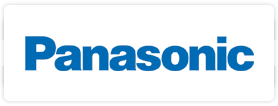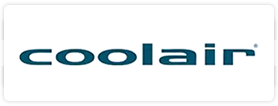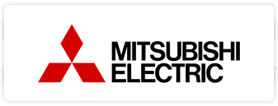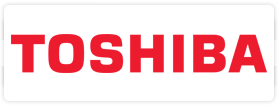
Yes. On-site visits can be arranged by appointment in or out of business hours. Quotations are clear and concise and follow promptly after the visit.
Most projects can commence in 1-2 weeks and in some cases earlier from acceptance to quotation. However booking ahead is always a good idea, as priority is assured, and if it is a new home we are able to work with the architect and builder ahead of time to ensure your air conditioning system is just what you want for your new home.
During the peak period during Summer months, Joe Cools may be in high demand. Planning ahead will reduce waiting time for your installation.
We strongly recommend this exercise is best left to Joe Cools. It is critical that the size and output of the unit is adequate or the air conditioning system’s function will be compromised and it will not meet your needs.
Unit selection criteria depends on:
According to the National Asthma Council (2016) ‘Higher levels of humidity in the home provide an environment for two undesirable triggers for asthma and allergy’ dust mites and mould. http://www.sensitivechoice.com/indoor-humidity/
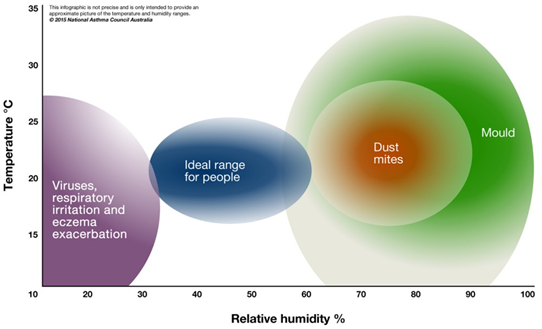
Figure. Approximation of optimal temperature and humidity ranges for people with respiratory issues.
National Asthma Council suggests that people who have respiratory issues can better control the indoor humidity of their home or office by considering a refrigerative air conditioning system as they can reduce humidity. Additionally, refrigerative air conditioners remove fine dust and pollen particles from the air.
The Australian Refrigeration Council (ARC) tick identifies a business or individual as being authorised to install, service and repair air conditioners. Without it they may be operating illegally, so always ask to see their licence before they begin their work.
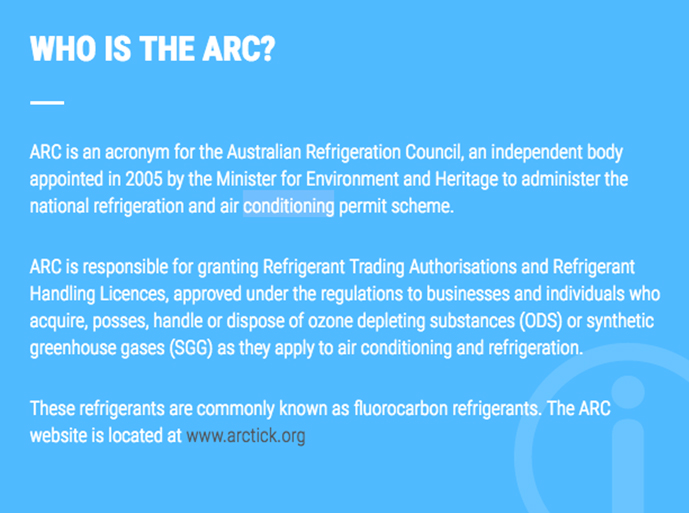
Only a licensed specialist knows how to handle the refrigerant in air conditioners, which can be environmentally harmful if not managed correctly http://www.lookforthetick.com.au/licence-check/
 An easy guide at http://www.energyrating.gov.au can provide you with energy ratings, however there are other variables that significantly impact on your energy consumption.
An easy guide at http://www.energyrating.gov.au can provide you with energy ratings, however there are other variables that significantly impact on your energy consumption.MEPS refers to Minimum Energy Performance Standards – this is an Australian Government regulation that requires that Air Conditioners imported into Australia all meet a minimum level of energy efficiency.
Under the imperial weights system horsepower is used to measure engine power, it doesn’t measure cooling/heating capacity. The term 'horsepower' came from a time when air conditioner compressors where driven with mechanical motors. Defining the input or output power of the electric motor today as a measurement for capacity would be completely misleading.
In Australia we use the metric system, and kilowatts (kW) are used to measure engine power (rotational power), cooling/heating capacity and electrical power – this measurement can capture the performance of the entire system.
In relation to air conditioning – horsepower typically means the rotational power of an electrical motor driving the units compressor, but provides no information about the efficiency of the compressor or other cooling components in the cooling circuit. The Australian standard capacity measure used is AS/NZS3823 condition - T1 for cooling or H1 for heating. Most people are more familiar with kW energy star ratings.
If horsepower was used as a standard in Australia it may encourage manufacturers to skimp on cooling components, and Aussie consumers may end up paying a lot more to run their air conditioners. (Air Conditioning & Refrigeration Equipment Manufacturers Association of Australia Inc)
All single phase, non-ducted Air Conditioners are required to have an Energy Label.
The higher the Energy Star Rating the more efficient the technology is. Please note that smart use of any air conditioner no matter what the energy rating is, will cost you less over time. Please refer to energy efficiency ratings for further information.
The distinction between comfort and industrial air conditioning is not always clear-cut.
‘Comfort’ air conditioning as its name suggests aims to exclusively provide a comfortable temperature-humidity requirement that is satisfying for the majority of people in a building or enclosed space. It also involves preferences of architectural design, weather forecasting, energy consumption, sound emissions and specialised zoning and functionality.
For example comfort air conditioning systems are designed for homes, apartments buildings, offices, shops, schools, theatres, stadiums and so on.
‘Industrial’ or ‘process’ air conditioning systems are environmental control systems, which support process and require precision in temperature and humidity control (and sometimes filtering and removal of contaminants) to ensure the correct operation of equipment, machinery or organic materials that require specific environmental conditions.
Examples of Industrial air conditioning include specialist cool rooms, laboratories, computer rooms, wine storage cellars, library dehumidifying, museums, food and beverage processing plants etc.
Flexible duct is used in airflow for heating, cooling and ventilation. The ductwork for any individual project is specifically designed by Joe Cools in accordance to the area that the client wishes to air condition. Ductwork is often referred to as a ducted system (see illustration).

The ducted system delivers or removes air from the building’ space via airflows eg supply air, return air and exhaust air.
Experienced air conditioning installers undertake planning (laying out), sizing, optimising, detailing and locating pressure losses through the ductwork system to deliver the most suitable indoor air quality, thermal comfort and the best level and amount of air flow possible.
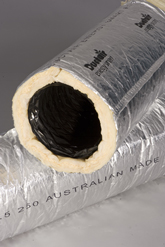
Joe Cools duct supplies are from Ductair who manufacture several grades of Flexible Ducting to suit the requirements of your system – Superior Ultra Ducting ideal for reverse cycle systems and for the energy conscious - Energy Smart Flexible Duct.

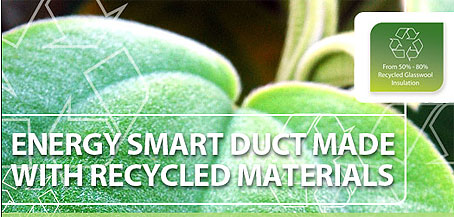
We can recommend the most cost effective and appropriate duct required for your building’s application.
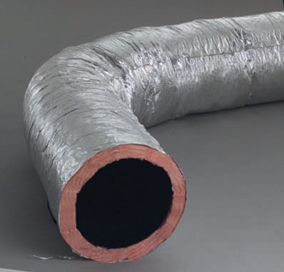
Air Conditioning diffusers come in a variety of shapes – square, round, rectangular and curved. A Linear Slot Diffuser (LSD) is popular in contemporary homes and usually appears as a long narrow rectangular slot (grille) that is mostly semi-concealed in a fixed or suspended ceiling. Linear Slot grilles may be single or contain different a number of slots in white and anodised silver finish.

Visit Linear slot smoke test / Air Con https://www.youtube.com/watch?v=0&XIUWzfKmjw to demonstrate (with smoke) the very directional flow of air that comes out 1) the short end and then the long end of the slot.
Like a lot of professions, installers need to be trained specifically to do their job. Air Conditioning installers are required to have technicians who handle refrigerant to have the appropriate training to undertake the job. Joe Cools A Class Electricians and Refrigeration Mechanic technicians meet all the licensing requirements of the Australian Refrigeration Council.
We have some excellent TIPS for a SMOOTH AC INSTALLATION that will help you prepare for the day.
Joe Cools understands that life is busy and full of interruptions. We understand that you may not be able to be present for the entire duration or part of the installation of your AC system. For this reason we have created a Tips for a Smooth Installation Information Sheet enabling you to prepare for the installation day.
To put your mind at ease – all Joe Cools technicians have current National Police Clearance Certificates for criminal offences and contact with the elderly, vulnerable / children.
Joe Cools recommends positioning an outdoor unit on a concrete slab, brackets, mounting blocks, rubber feet or roof mount kit as these platforms tend to reduce excessive vibration and or noise. By keeping the unit off the ground it also tends to dissuade most bugs, slugs and small creatures making a home beneath the unit and potentially causing failure of the machine from an electrical short out.
National Asthma Council suggests that people who have respiratory issues can better control the indoor humidity of their home or office by considering a refrigerative air conditioning system as they can reduce humidity. Additionally, refrigerative air conditioners remove fine dust and pollen particles from the air.
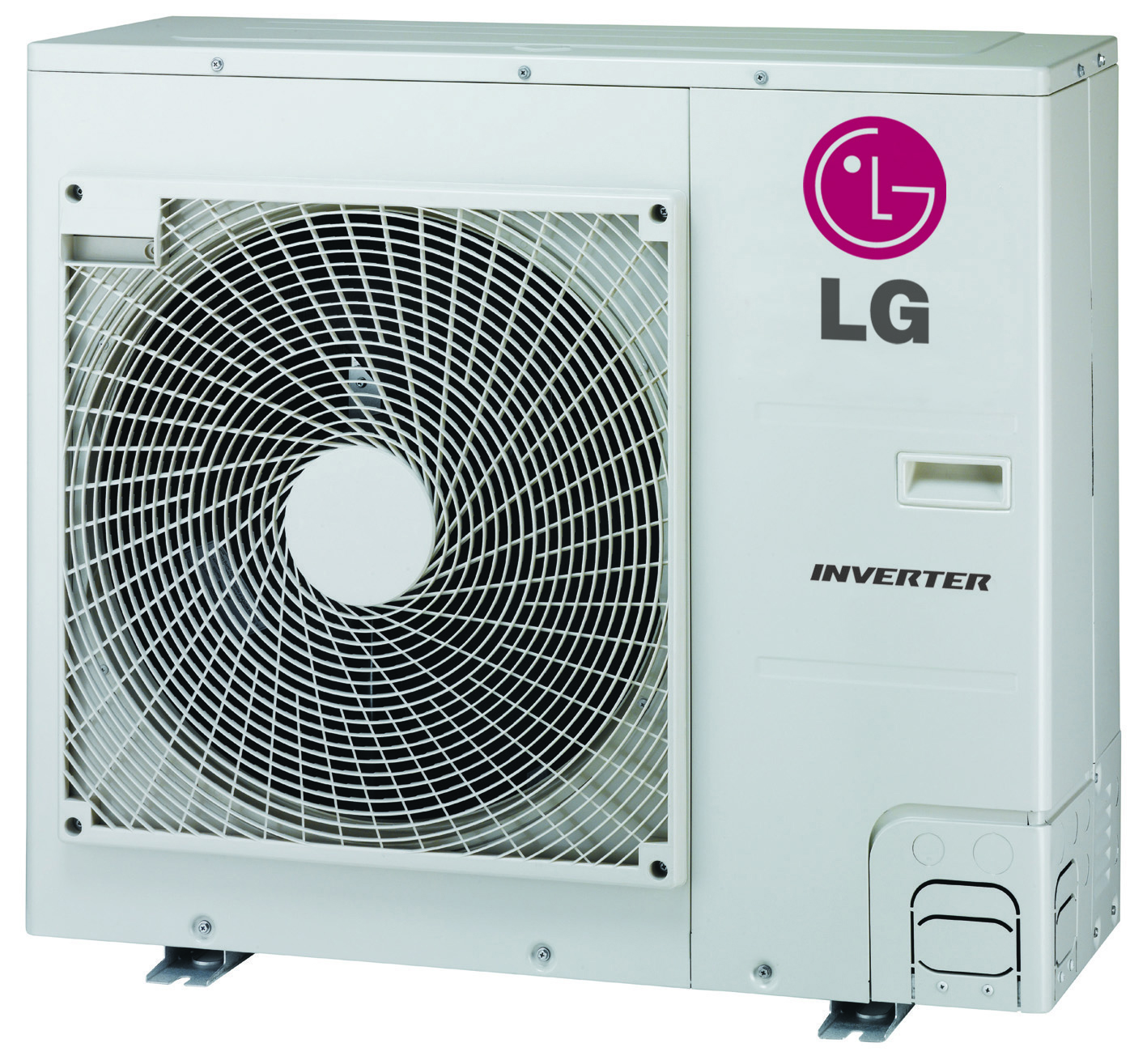
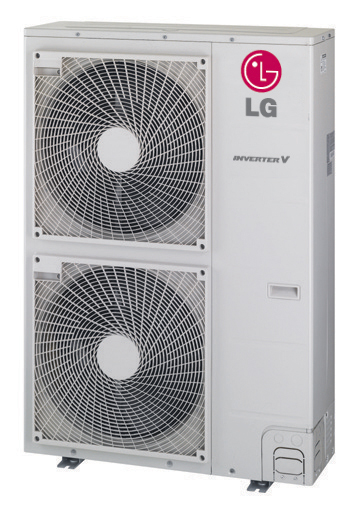
Adequate clearance is required around, on top and in front of the unit so it can effectively operate. Joe Cools can arrange concealments such as louvers or a partition if you would like to disguise your unit.
Most homes generally have single phase 240 volts supplied to the building. Generally Air Conditioning units up to 15 kilowatts come as 240 volts single phase units, while the larger units over 15 kilowatts generally require 3-phase 415 volts.
Three phase Air Conditioners are usually used for larger areas requiring higher heating /cooling capability. However provisions for a 3-phase supply should be made in advance to the premises before the installation day if a 3-phase unit is being supplied. Joe Cools can advise you on the electrical supply required for the air conditioning system that you select.
When electricity is generated from our electrical distribution center it comes in the form of alternating currents (AC) in 3 separate phases, which are transmitted via individual cables. The 3 phases can be combined (3-phase) or separated (single phase). The 3-phase Air Conditioning units allow the high starting currents to be spread over three phases rather then one.
Single-phase electricity comes to the home via two cables: active and neutral. The neutral wire is connected to earth at the switchboard.
3-phase has 4 cables: 3 actives (called phases) and 1neutral.
Most people want to know that the installation company they selected to do job has experienced technicians who are knowledgeable and do really good job.
Government regulations stipulate that only people appropriately trained can install Air Conditioning Systems.
Yes it is possible however the warranty will only be valid for the initial installation site so you may wish to take this into consideration along with the potential cost of removal and re-installing the machine, as well as making good any holes or damage as a result of removing the unit. Removal of the air conditioning system must be done by a trained professional.
See here ‘TIPS for a SMOOTH AC INSTALLTION’
On very hot days you can try turning on your system early in the day before the room gets hot, this way your air conditioner won’t need to work as hard to reach the set temperature. The timer function on modern technology will allow you to set the timer for on/off times.
‘Each degree Celsius can reduce or increase running costs between 10 and 15 percent. If you set your thermostat at 23 degrees Celsius, your house may be comfortably cool, but it will still be comfortable at 25 degrees and you will be reducing your running costs 20 to 30 percent.’ (Independent Pricing and Regulatory Tribunal, 2016 http://www.ipart.nsw.gov.au )
Multi-directional outlet diffusers allow you to adjust the air direction and flow of the air.
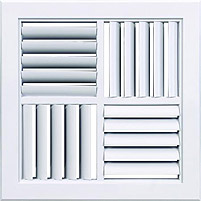
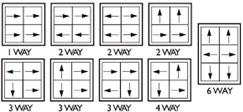
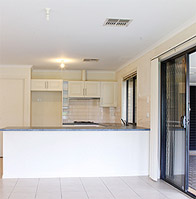
The ceiling outlet is comprised of 4-6 smaller squares called ‘cores’. There are 2 main types of cores – fixed and adjustable.
If it’s a unit we supplied contact us. Otherwise Google your AC brand and model on the internet. The model number may be found on the wall controller or look at the outdoor unit you may find a label on the side.
Comfort is subjective and varies widely from person to person, but there is a generally accepted range of temperatures where approximately 80% of people feel comfortable and the system will perform effectively and efficiently. Finding the best temperature setting is all about operating your AC to acquire the balance between comfort and efficiency of the system.
The National Occupational Health and Safety Commission advises that in winter wearing heavy clothes a comfortable temperature is 20 - 24 °C, whilst in the summer, wearing light clothes, 23 - 26 °C is more comfortable.
The Australian Standard AS 1837 Code of Practice for Application of Ergonomics to Factory and Office Work recommends a temperature range of 21 – 24 °C.
Heating systems take around 4-10 minutes to commence blowing warm air. The system is trying to heat up and will commence blowing warm air once the indoor coil is hot. This is called a ‘pre-heat cycle’.
Its highly likely that it has a built in time delay, and will start up in around 4-10 minutes.
This commonly occurs when the machine is in defrost mode. Heat pumps (outdoor units) can get frosty when they are running on heat mode. It doesn’t happen often but the technology is trying to extract heat from cold outdoor air
When the outdoor coil temperature goes below dew point, moisture results and if the outside ambient temperature is very low the moisture on the heat exchanger will freeze. A correctly operating air conditioner will recognise this and initiate a defrost cycle before it ices-up completely.
So, there is nothing wrong, air conditioners come with a built-in defrost system. Leave it for up to 20 minutes to enable it to complete its cycle so it can run smoothly again.
When the relative humidity is 100%, we feel much hotter than the actual temperature indicates because our sweat does not evaporate at all. This is known as: ‘The Feels Like Temperature’, If the relative humidity is low, we feel cooler than the actual temperature because our sweat evaporates easily; we can also feel extremely dry.
The chart below lists an index to demonstrate how hot a given temperature will feel to us in various relative/humidity levels.

There are 2 modes in the Evaporative Air Conditioner – 1) Cooling and 2) Fan/Ventilation for fresh circulating air. Some Evaporative ACs have automatic functions whiles others just have manual. The following is a general guide for most brands, for specific information about your AC please refer to the owners manual.
Automatic (Auto) Cooling ModeIn the auto mode the fan will increase and decrease to acquire the desired temperature. If the temperature increases at the wall control, then the fan speed will increase, and likewise as the temperature decreases the fan speed will decrease until the cooler turns off. Being on a cooling setting, the fan is running, and the pump will also be saturating the pads allowing for a cooling effect.
Manual Cooling ModeIn the manual mode the fan speed is selected by the user. Once a speed is determined it will stay at that setting until changed or turned off. Being on a cooling setting, the fan is running and the pump will also be saturating the pads allowing for a cooling effect.
Automatic Fan or Vent ModeThe automatic fan mode will only run the fan without the pump and will self-alter in speed according to the temperature sensed at the controller, due to the automatic setting. When ‘vent’ is displayed, fresh air circulates through the conditioned area.
Manual Fan or Vent ModeThe manual fan mode will only run the fan without the pump and will maintain the speed that has been set by the user or until it is changed or turned off. When ‘vent’ is displayed fresh air circulates through the conditioned area.
Yes. Depending on your skill level and knowledge about your air conditioner unit and system, you may be able to repair it yourself OR you can call out a manufacturer approved service technician. Some repairs will require spare parts and you may need to check if they are in stock, and if not their availability. Note: electrical and refrigeration licenses may be required for certain repairs.
Check the list of Joe Cools Youtube videos and information sheets, as these may be able to assist you.
Ducted disposable filters should be replaced between 3-6 months this may be between 9-12 months depending on your usage of the system.
Ducted reusable filters are recommended to be replaced every 1-2 years.
Wall Splits have filters that should last the life of the air conditioner if maintained correctly.
Filters and filter media are available from:
Maintaining Your Air Conditioner
If you clean the filter regularly your system should run well. If you strike any faults contact the manufacturer’s service agent. Maintaining Your Air Conditioner
The following is a method to test that each zone fully opens and fully closes.
Some plastic vents can be cleaned in the dishwasher by placing them in the top rack and select a gentle low temperature setting or in warm soapy water. They may also be cleaned with a brush-head attachment of the vacuum cleaner then gently wiped with a micro-fibre cloth afterwards.
Air Con Filter Maintenance Ducted, Air Con Filter Maintenance Wall Split.
Yes. The tool required to repair the damaged fins is a ‘AC Fin Comb’ commonly and cheaply available for purchase on Ebay.
Air Con Filter Maintenance Ducted, Air Con Filter Maintenance Wall Split.
Generally manufacturers recommend servicing evaporative cooling systems once or twice a year – at the end of the summer and in preparation before the next summer starts. Some models have a ‘no seasonal maintenance’ feature and do not need annual or end of season cleaning, but they will still require routine checks particularly if they are operating under harsh conditions.
The recommended maintenance process is outlined in the Owners Manual. If you strike any faults or do not feel comfortable performing the maintenance, contact the manufacturer’s service agent.
Servicing your Evaporative AC is relatively easy and uncomplicated to undertake. However because your cooler is mounted on the roof, it can be hazardous as it requires some skill, knowledge and qualification about working at heights. If you are unsure, contact the manufacturer’s service agent for assistance.
Steps to help you maintain your evaporative AC are:
At the end of the summer season* NOTE: AC service agents can provide cleaning and maintenance.
In preparation before next summer:*Warning: failure to replace filter pads when they are past their useful-life may result in reduced efficiency and poor performance of the air conditioner or water carryover into ductwork and/or electrics resulting in expensive damage.
Yes. ‘Pipelagging Self Seal Insulation’ is available from your local refrigeration or plumbing wholesaler. It is self-sealing and is easy and quick to install.
Before proceeding with a potential costly repair it’s a good idea to obtain a quote as it could be more economical to replace it. Consider the following:
Substantial Cost SavingsAfter a period of time the system may become expensive to repair and break down more often. If your repair costs are significant, keep in mind that a new unit will come with up to a 5 year manufacturer’s warranty. Replacement parts and refrigerant gases are discontinued and phased out, which will cause them to be more expensive if not completely unavailable.
The technology in Air Conditioning units are constantly evolving, resulting in reduced running costs.
Green BenefitsThe Australian Government and the Australian Refrigeration Council (ARC) have mandated the phase-out of
If your current air conditioning system can’t handle the demands on its performance during the hottest and coldest times of the year, or has broken down multiple times over the past several years, repairs may not be in your best interest. It may be costing you more than investing in a new system. Modern air conditioning technology can save you money as it requires less energy to heat and cool.
Save money on replacing an old air conditioning system.When replacing an old ducted reverse cycle air conditioner – some ductwork, grilles, pipework, zoning system and electrical supply may not need replacing - reducing your costs.
In a change-over from an evaporative AC to a ducted reverse cycle AC there is reduced compatibility of components. However there are ceiling penetrations that may be able to be reused rather than being repaired, patched and new ones cut.
When replacing an old evaporative air conditioner – the dropper box, ducting, vents and electrical supply may be in good condition, which can substantially save on replacement costs.
Ask us what savings you may be able to make.
No. Home Air Conditioning units should never need to be re-gassed if they are installed correctly.
A car’s Air Conditioning pipework and connections are slightly porous and will naturally lose gas over time. Reverse cycle air conditioners are different to car air conditioners as they are closed continuous systems, therefore gas should not leak out for the entire life of the unit.
The following is an easy test to identify which zones control which rooms:
Until the fault is diagnosed and rectified, for reverse cycle units isolate the electrical supply to the unit.
For evaporative air conditioners isolate the electrical and water supply to the unit.
Air Con Filter Maintenance Ducted, Air Con Filter Maintenance Wall Split
Absolutely not. Do not put a cover over the unit. They are designed to operate outside in the open air. However in extreme environments such as the beach-front, it may be beneficial to shield the unit from weather coming directly in from the sea as it may reduce corrosion from salt spray.
Many air conditioners are covered with tarpaulins or large bags during the winter months. Evaporative AC covers are designed to protect Evaporative AC units from the harsh conditions of the weather, water, dirt, dust, leaves and other outside debris. They are usually made of heavy durable UV tolerant fabric and easy to slip on and off. Not all Evaporative units require you to climb onto the roof to slip on an external cover, some seal off automatically every time the unit is turned off. Check with the brand manufacturer if you are unsure.
Short-term solution - Most wall split ACs have an on-off switch on the indoor unit, which allows for basic operation without a remote controller.
Longer-term solution – A universal remote control may be a more affordable solution than purchasing a brand named one. These are commonly available from online shopping sites such as Ebay.
At Joe Cools we replace many old air conditioning units that are past their use by date however, the remote controllers are still in good condition. We keep all the remote controllers from our change overs so give us a call and we may have a second-hand compatible replacement for your unit, free of charge.
Have you found an answer to your query? If not, email us with your question.
Australian Refrigeration Council (ARC) Authorised No: AU 54227
Building Work Contractor Licence: BLD 307382
Building Supervisor Licence: BLD 307285
ABN: 58 645 958 998



